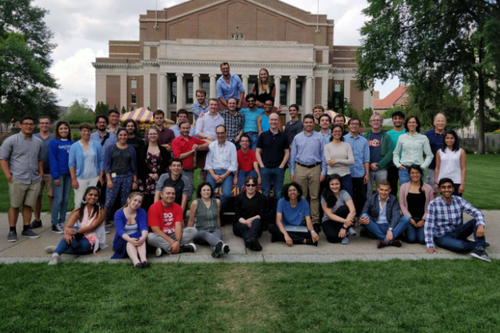
A University of Minnesota-based research collaboration received a $1.2 million National Science Foundation grant to accelerate efforts to develop synthetic cells. Kate Adamala, an assistant professor in the U of M College of Biological Sciences’ Department of Genetics, Cell Biology and Development, is the lead investigator for the Build-a-Cell Research Coordination Network, an international collaborative of researchers from 11 countries working together across disciplines to develop working cells from man-made components.
“Synthetic cells offer great promise as a catalyst for cutting-edge technologies aimed at supporting advances in the biomedical and biomanufacturing sectors,” said Adamala. “The expertise necessary to achieve our goal of engineering different types of cells will require researchers across a variety of disciplines to come together. Build-a-Cell will facilitate that high level of collaboration.”
The members of the network will work together to develop the components necessary to create a variety of cells from scratch and, in the process, provide insights into these “building blocks” of life. By engineering synthetic cells researchers hope to shed light on the basic structure of cells, how they function and, ultimately, arrive at criteria to determine when a synthetic cell crosses the threshold of “living.”
The Build-a-Cell Research Collaboration Network, aided by advances in genome synthesis, microscopy and biological engineering technologies, will fast-track efforts by closing the loop between research teams around the world working on various components of a synthetic cell. Engineering synthetic cells will require the development of many new tools, such as imaging techniques, genetic engineering methods, software, and safety precautions and policies, all of which can then be used in other areas of science.
“Non-natural cells that perform non-natural functions will lead to the discovery of new chemistries and new synthetic species,” said Adamala. “We hope these cells will work in challenging environments to synthesize chemical molecules that we now cannot obtain from live cells. These also have the potential to be used as biological factories to test and produce new drugs and to study disease models.”
In addition to collaborating on research, network members will share their findings with the public through tutorials and online education opportunities to increase understanding of synthetic biology and its potential impact. The community will also focus on policy and biosafety solutions, to create framework for regulating and advancing synthetic cell research research.
- Categories:
- Science and Technology





